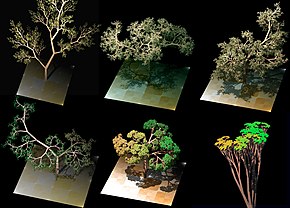
Back التوليد الإجرائي Arabic Prozedurale Synthese German Generación por procedimientos Spanish Protseduuriline genereerimine Estonian Proseduraalinen generointi Finnish Génération procédurale French Generasi prosedural ID 手続き型生成 Japanese 절차적 생성 Korean Procedurele generatie Dutch
This article includes a list of references, related reading, or external links, but its sources remain unclear because it lacks inline citations. (May 2022) |

In computing, procedural generation (sometimes shortened as proc-gen) is a method of creating data algorithmically as opposed to manually, typically through a combination of human-generated content and algorithms coupled with computer-generated randomness and processing power. In computer graphics, it is commonly used to create textures and 3D models. In video games, it is used to automatically create large amounts of content in a game. Depending on the implementation, advantages of procedural generation can include smaller file sizes, larger amounts of content, and randomness for less predictable gameplay. Procedural generation is a branch of media synthesis.[citation needed]